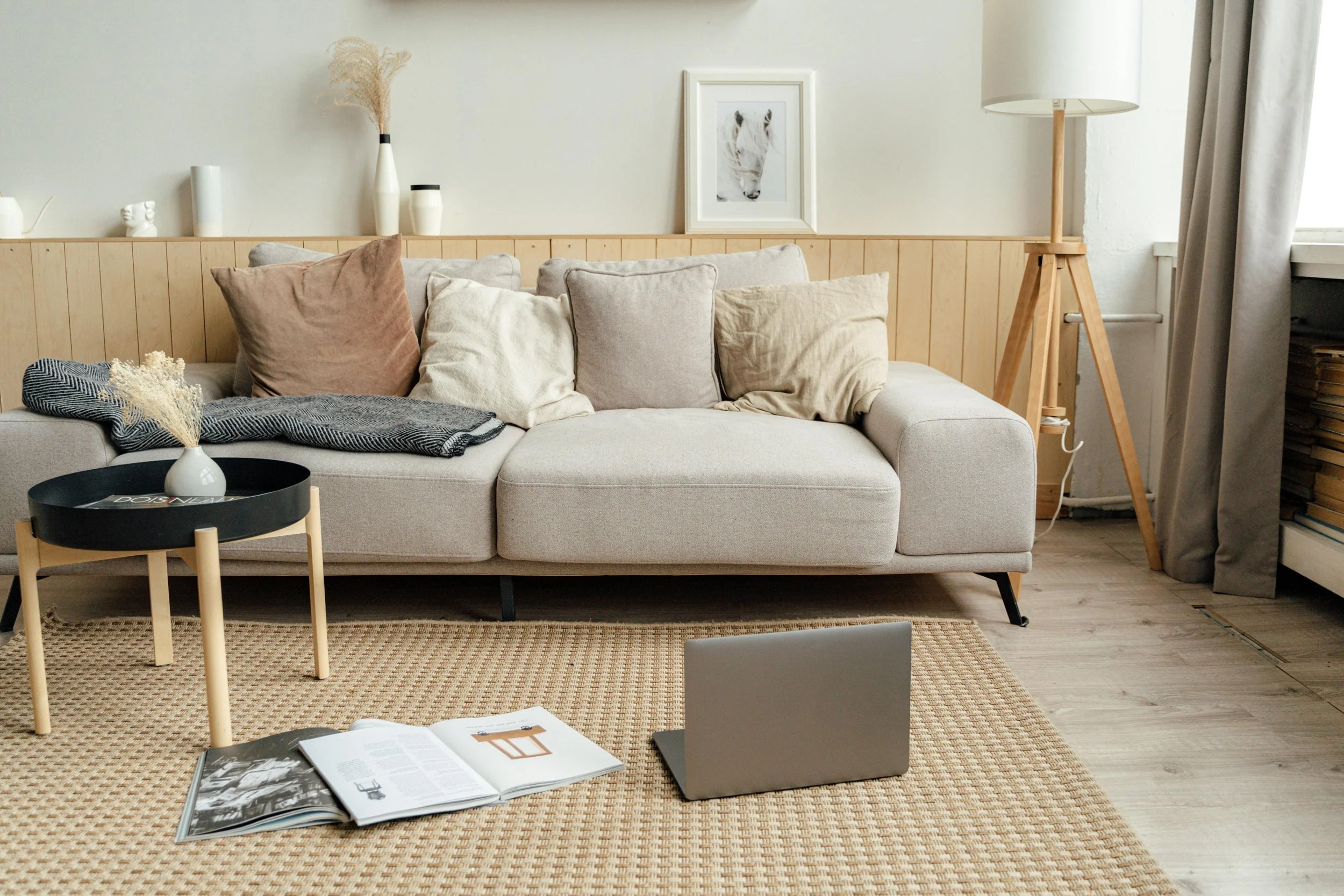Designing for the Neurodivergent Mind: 5 Interior Styles That Support Mental Wellness
Written by Tiffany Escobar
Contributing Editor, Design & Culture
In a world designed for neurotypical rhythms, our spaces often overlook the needs of neurodivergent minds—those with ADHD, autism spectrum disorder, sensory processing challenges, or anxiety-related conditions. But home isn’t just where we live—it’s where we regulate, recharge, and reconnect with ourselves.
The way a space looks and functions can either overstimulate or soothe the nervous system. Thankfully, thoughtful interior design can become a powerful tool for mental health and sensory harmony.
Below, we explore five design styles that support neurodivergent needs, grounded in psychology and neuroscience.
Minimalist Design
Best for: ADHD, Anxiety
Why it helps:
People with ADHD experience heightened sensitivity to visual and environmental stimuli. According to research published in Frontiers in Psychology, cluttered environments can impair working memory and increase cognitive load, especially for individuals with ADHD or executive dysfunction.¹
Minimalist interiors—defined by clean lines, open layouts, and a neutral palette—reduce that visual noise. The simplicity helps the brain filter information more effectively, making it easier to focus, relax, and transition between tasks.
Supportive elements:
Clear surfaces and hidden storage
Soft, consistent lighting
Limited color palette to reduce distractions
2. Biophilic Design
Best for: Depression, Autism, General Well-being
Why it helps:
Biophilic design connects people to nature through natural materials, plants, and organic forms. Studies show that exposure to nature—real or simulated—can lower cortisol levels, reduce heart rate, and improve mood.² For neurodivergent individuals, especially those prone to sensory overwhelm, these natural elements act as a grounding mechanism.
One study found that access to indoor plants improves attention span and cognitive performance in children with ADHD.³
Supportive elements:
Indoor greenery and nature-based art
Natural textures like wood, jute, linen
Maximized daylight and ventilation
3. Soft Scandinavian Style
Best for: Sensory Sensitivity, Autism, General Emotional Regulation
Why it helps:
Scandinavian interiors favor soft textures, warm neutrals, and layered coziness (hygge). For those with heightened sensory sensitivity—common in autism spectrum disorder—this kind of environment offers predictable comfort.
The use of natural light, soft fabrics, and warm wood tones avoids the harsh sensory inputs that can trigger discomfort or anxiety. According to a study in the Journal of Autism and Developmental Disorders, predictability and sensory-friendly textures can reduce overstimulation and improve daily functioning.⁴
Supportive elements:
Light-toned wood furniture
Layered textures (wool, cotton, boucle)
Soft, diffuse lighting (avoid fluorescents)
4. Monochrome or Low-Stimulation Environments
Best for: Autism, ADHD
Why it helps:
A consistent, monochrome color palette offers visual predictability, reducing sensory overload. High-contrast colors, bold patterns, and bright hues can cause stress or confusion for individuals with visual processing sensitivities.
Color psychology research shows that white can create a sense of calm, clarity, and spaciousness. It’s often associated with cleanliness and mental stillness, which can be especially supportive for neurodivergent individuals who are sensitive to visual overload. In contrast, highly saturated reds or yellows can increase arousal and alertness. A low-stim space with a predominantly white palette helps the nervous system stay regulated, especially in overstimulating moments.
Supportive elements:
Tonal shades in calming colors (sage, sand, slate)
Minimal pattern use
Clutter-free visual fields
5. Transitional & Modular Design
Best for: ADHD, Executive Dysfunction, Autistic Burnout Recovery
Why it helps:
For many neurodivergent people, needs change from day to day—or even hour to hour. A flexible, modular layout supports this fluidity. For example, a reading nook that converts into a workspace allows for dynamic interaction with the environment depending on mood or energy levels.
Occupational therapists often recommend "environmental structuring" for individuals with ADHD to reduce task friction.⁶ Transitional spaces lower barriers to action by offering intuitive, low-pressure zones for rest or focus.
Supportive elements:
Movable furniture or partitions
Convertible desks and seating
Accessible, labeled storage for daily-use items
Intentional Living, Inclusive Design
At Neova Collective, we believe interiors should support how you feel—not just how your home looks. For the neurodivergent community, design is more than aesthetic; it’s a form of emotional architecture that can make the difference between burnout and balance.
Whether you’re designing for yourself or a loved one, these five styles offer frameworks for comfort, clarity, and cognitive ease—because every brain deserves a space to thrive.
If this sparked your curiosity about how color impacts the way we feel, focus, and function—there’s so much more to explore. Our Color Theory eBook dives deeper into the emotional and psychological effects of color in interior design, with practical guidance on how to curate spaces that support your mood, mindset, and personal wellbeing. Whether you're designing for calm, creativity, or clarity, this guide is your go-to resource. Click here to get your copy and start designing with intention.
References:
McMains, S., & Kastner, S. (2011). “Interactions of top-down and bottom-up mechanisms in human visual cortex.” Frontiers in Psychology
Ulrich, R. S. (1984). “View through a window may influence recovery from surgery.” Science
Taylor, A. F., & Kuo, F. E. (2009). “Children with Attention Deficits Concentrate Better After Walk in the Park.” Journal of Attention Disorders
Mostafa, M. (2015). “An architecture for autism: Concepts of design intervention for the autistic user.” International Journal of Architectural Research
Kaya, N., & Epps, H. H. (2004). “Relationship between color and emotion: A study of college students.” College Student Journal
Barkley, R. A. (2011). Executive Functions: What They Are, How They Work, and Why They Evolved.







